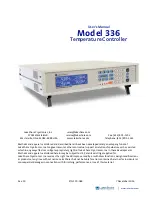
Technical Manual Shutter Actuator JAL-0X10X.02
MDT technologies GmbH •
51766 Engelskirchen • Papiermühle 1
Tel.: +49-2263-
880 • Fax: +49
-2263-4588
• [email protected] • www.mdt.de
54
54
The functionality of the alarms is identical for all three types of alarms. A cyclic monitoring can be set
for each of the 3 alarms. Furthermore, an action can be defined for triggering the alarm. Here, the
user has 4 options: On the one hand, the blind actuator can move the channel up or down. On the
other hand, the blind actuator can react with the setting "no action". With this setting, the channel
remains in the pre-alarm position. Alternatively, a defined height position can be approached. This is
described in chapter 4.10.5 "Approaching the height position". A control is then not possible as long
as the alarm is active. Even after the alarms have been released, the blind actuator can perform
certain actions. You can select between "Move up", "Move down", "Move to former position". If
selecting "no action", the channel remains in the current position.
When programming, it must be noted that the communication objects of activated alarms should
always be included in group addresses, since they can not be acknowledged otherwise. If an alarm
whose communication object is not integrated is active because of the cyclic monitoring, this can
only be acknowledged via the ETS software!
4.10.3 Periodical observation
The cyclic monitoring of the alarm function can be set separately for each of the three alarms. The
setting range moves from 0-120 min, the setting 0 min switches off the cyclic monitoring.
The communication object for the respective alarm must receive a signal within the set monitoring
time. Otherwise the alarm is triggered automatically. In KNX weather stations there are settings, in
which intervals a cyclic transmission is to take place. The time for the cyclic transmission should
always be below the monitoring time set in the shutter actuator in order to prevent accidental
triggering of an alarm.
The cyclic monitoring ensures that a weather sensor is functioning properly. If a signal fails due to a
failure of a weather station or a wire break, the shutter actuator triggers an alarm after the
monitoring time has elapsed.
4.10.4 Normal blocking
The following table shows the possible settings for the locking object:
ETS-Text
Dynamic range
[default value]
Comment
Action at blocking (value=1)
no action
move up
move down
move to height position
Setting the action which is to be
triggered when activating a block
with a 1
Action at reset of blocking
no action
move up
move down
move to former position
Setting the action which is to be
triggered when deactivating a
block with a 0
Table 25: Setting options - Normal blocking
The shutter actuator can move to a defined position, move up/down or remain in its current position
when the block object is activated. When the block function is active, the channel can not be
operated.
Scenes, automatic positions and 1Bit move to position are also blocked!
When the block is released, the channel can move up/down, move to the position it held before the
block function or remain in the current position.
















































